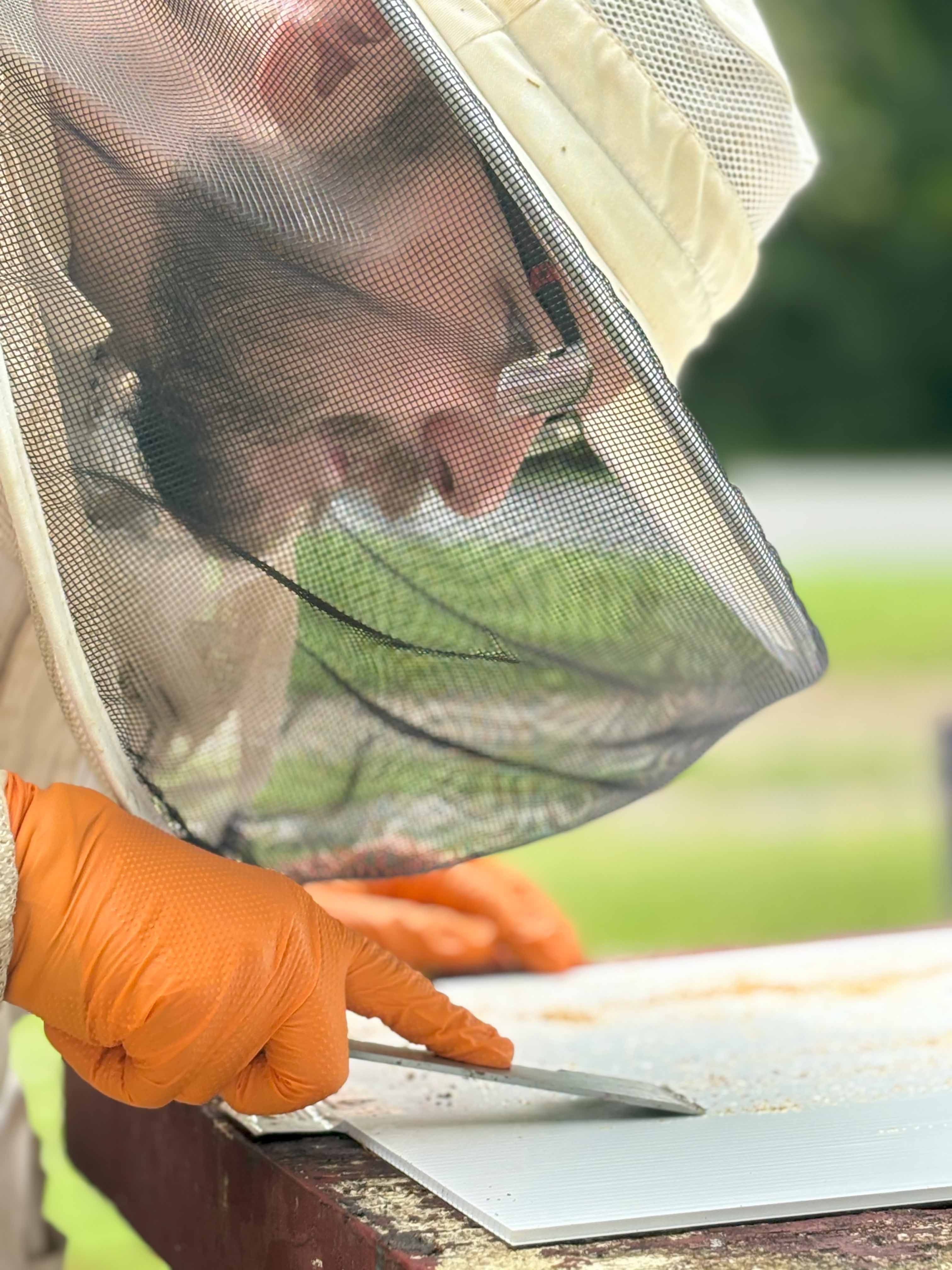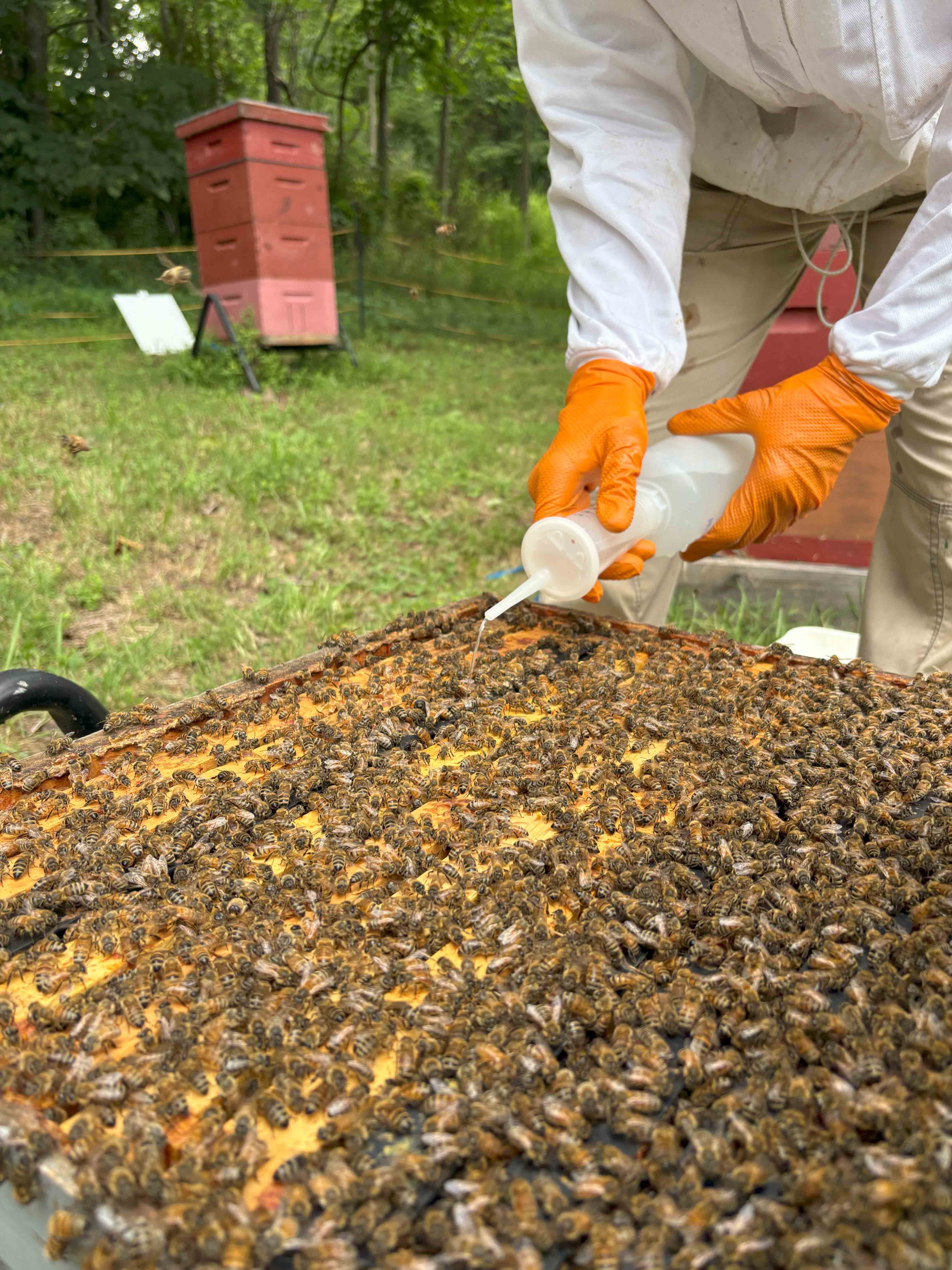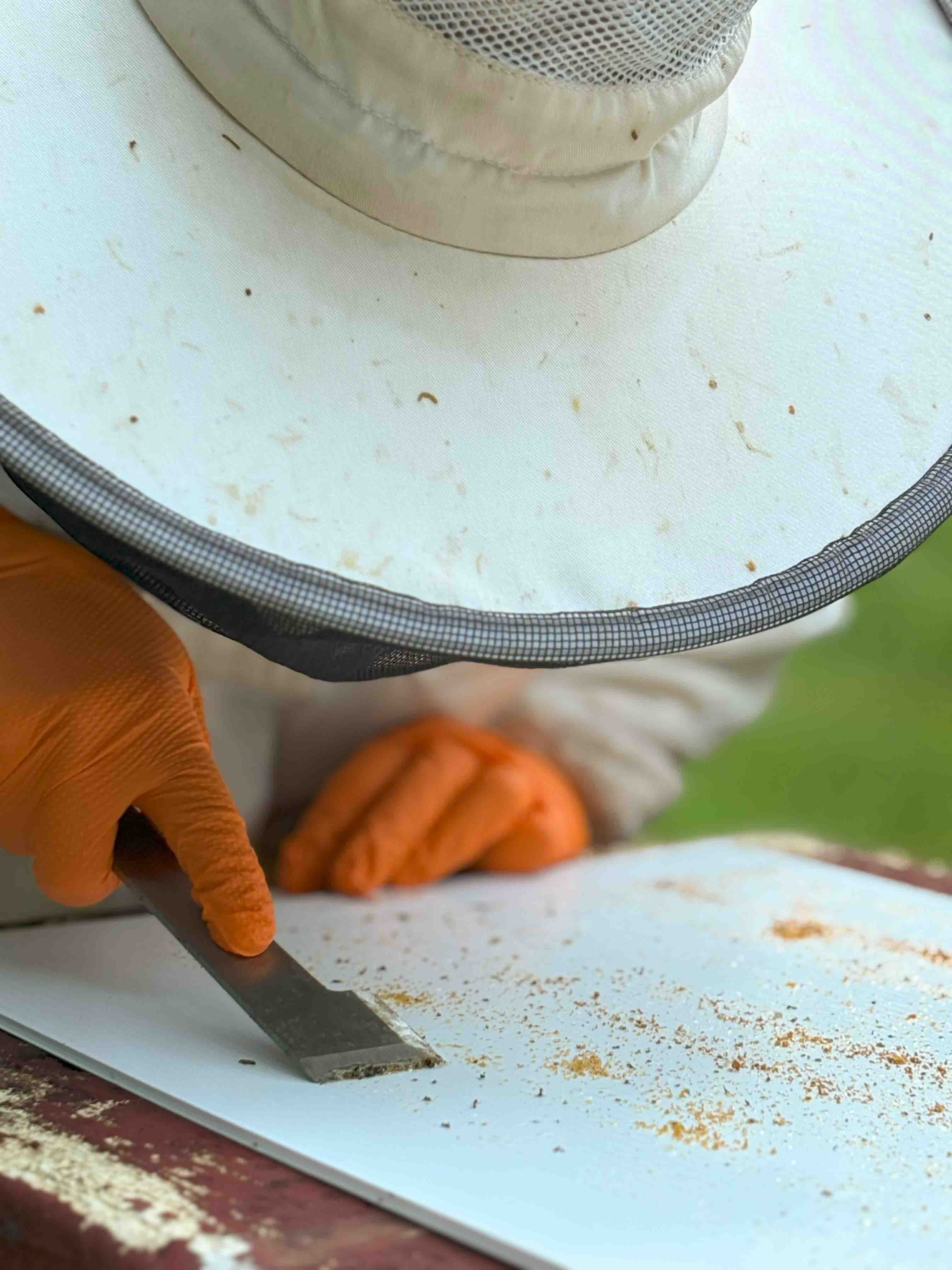This summer, our staff scientist, Dr. David Peck, collaborated with Dr. Cameron Jack from the University of Florida Honey Bee Research and Extension Laboratory to research a new miticidal product from Alveis (part of Chemicals Laif.) Dr.s Jack and Peck developed the research protocol with Dr. Jack’s student Marie Yanchak, in consultation with the Alveis. Yanchak and Jack in Florida, plus Peck and Betterbee’s Bee Team in NY, treated colonies with the new miticide, alongside other commonly-used miticides to allow for comparison.
The product, Api-Bioxal RTU, has just been approved and registered by the EPA. With this federal approval, the manufacturer (the Alveis brand within Chemicals Laif) can work to receive approvals from each state’s pesticide regulators. Once that’s done, the product will be available for purchase and use in your hives.
This new product is a major update to the oxalic acid dribble method. In the traditional dribble, a beekeeper mixes oxalic acid into sugar syrup, and then measures out the right amount to dribble over the bees. With Api-Bioxal RTU, the treatment is already mixed up at the right dose, so the product is ready-to-use. (That’s what “RTU” stands for!) The dose of OA is higher than what is approved in homemade sugar syrup dribbles. And most importantly, the sugar syrup has been replaced with different food-safe and bee-safe mixers that will allow the oxalic acid to stay active in the hive for longer, without tempting the bees to eat it and potentially harm themselves.
Api-Bioxal RTU has already been extensively tested in Europe and has proven its value for dribble treatments when a colony is broodless, such as in the early winter in many regions. Our research this summer focused on the ability to control mite levels with repeated dribble treatments, 1 week apart, for a total of 4 treatments.
So how exactly did we test Api-Bioxal RTU?
First, we assessed the mite infestation in each colony, using both sticky boards under screened bottom boards as well as alcohol washes on each colony. We also assessed the strength of each colony, examining frames and counting the amount of bees, brood, and stored food.

Scraping the oiled sticky board with the hive tool as you go lets you count up mites one “line” at a time, and clean the board while you’re at it!

Assessing colony size and health at the beginning of the experiment.
Then, we applied treatments to the test colonies. Some received the new Api-Bioxal RTU, and others received different miticides, or no treatment at all. By continually monitoring and reassessing the hives, we’re able to determine how well each treatment controlled mites, and also what other effects the treatments may have had on the colonies.

The brand new miticide Api-Bioxal RTU being applied to one of the research colonies.
So what did we learn?
The research project here in the Betterbee apiaries is still underway, but since Florida’s season starts earlier than New York’s, the Florida research is already completed and their data are now being analyzed. It’s too soon to say anything in detail, but the Florida team found that the colonies treated with the new miticide had fewer mites in the brood than the colonies treated with other miticides. Excitingly, we’re finding that repeated dribbles of Api-Bioxal RTU seem to be comparable to repeated oxalic acid vaporizations. This means that beekeepers who don’t want to deal with the hassle and health risks of vaporizing oxalic acid (or who don’t want to buy a pricey oxalic acid vaporizer) may be able to use a bottle of Api-Bioxal RTU instead to keep their bees healthy.
Keep an eye out for our final research results, and for Api-Bioxal RTU at your favorite beekeeping supply store. We’ll be selling the product as soon as it’s available. (We’re so excited about it, we’re also happy to work with other beekeeping suppliers so that they can distribute it too. Write to us at support@betterbee.com to learn about wholesale purchases of Api-Bioxal RTU!)




